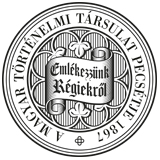Századok – 2019
2019 / 5. szám - TANULMÁNYOK - B. Szabó János . Sudár Balázs: Kende és gyula? A magyar kettős fejedelemség teóriájától a forrásokig
KENDE ÉS GYULA? 964 KENDE AND GYULA? From the Theory of the Hungarian Dual Princedom to the Sources By János B. Szabó – Balázs Sudár SUMMARY The limited number of written sources relating to early Hungarian history are burdened by numerous difficulties as to their reading and interpretation. The present paper investigates only one – albeit crucial – phrase; one which describes the form of lordship over the early Hungarians by making reference to two names, those of kndh and glh . The Arabic text is far from unambiguous: while kndh can be interpreted either as an office or a vocative, Glh is generally regarded as a personal name. Contrary to the prevailing assumptions, kndh is unknown in the world of the steppe, with very vague traces leading towards Iran and the Mongols. As to glh , nowhere is it recorded as a form of dignity, and very rarely as a proper name (of a person or tribe). Thus, such names denoting the chief holder of power over the early Hungarians seem to be unconnected to the Turkic world of the steppe, and are unrecorded either in the Turkic Empire or in its successor states, such as the Khazar Kaganate.
